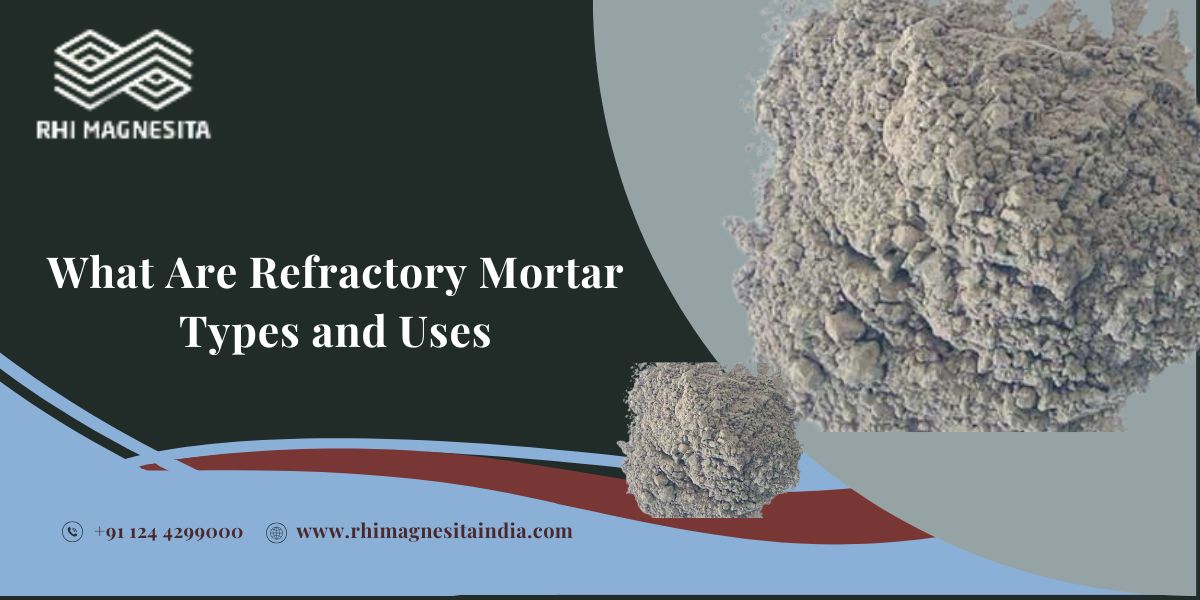
Introduction to Refractory Mortar
In high-temperature industrial uses, refractory mortar is the unsung hero; it silently bears immense heat and pressure to maintain operations free from interruption. Refractory mortar is specially made with a combination of heat-resistant components, including silica, alumina, and magnesia, to survive temperatures that would melt regular building materials, unlike conventional mortar which would disintegrate under blazing circumstances.
It is more than simply a binder; it's a pillar barrier against chemical and thermal deterioration, therefore ensuring the lifetime and stability of structures in the most hostile surroundings. From the fiery kilns of ceramic manufacturing to the furnaces of steel mills, refractory mortar forms the very backbone of industrial resistance. Basically, it is a necessary component that binds not only bricks but also the dreams of sectors trying to operate consistently in the face of constant heat.
How Refractory Mortar differs from Regular Mortar
Designed to withstand situations that challenge common materials past their breaking point, refractory mortar stands out from conventional mortar mostly in terms of its amazing heat resistance and unmatched endurance. Refractory mortar is strong and consistent whereas conventional mortar would break, crumble, and give way to great thermal stress. It is carefully developed using unique heat-resistant materials, meant to withstand temperatures far exceeding the limits of regular mortars. This special resistance lets it create strong links even in industrial furnaces, chimneys, and kilns, thus fortifying a layer that maintains structural integrity among constant, blazing extremes.
Composition of Refractory Mortar
Refractory mortar is an alchemical wonder, combining elements that resist the strongest of fires. Fundamentally, it is silica, a material known for its ability to withstand high temperatures without losing strength. When combined with alumina, it increases the mortar's thermal resistance, therefore strengthening it to resist continuous heat and pressure. Another strong component, magnesia, gives special stability and improves the mortar's resistance to chemical reactions and integrity preservation. These components used together make a composition designed to last, forging a link difficult for heat or time to readily reverse.
Types of Refractory Mortar
There are many specific forms of refractory mortar, each designed to satisfy certain needs in high-temperature settings. Perfect for uses where the simplicity of usage and quick setting are most important, an Air-setting mortar is a master of adaptability that cures upon air exposure. Heat-setting mortar reveals its actual strength only under strong heat, which is perfect for industrial settings needing a solid bond under continuous fire.
Hydraulic-setting mortar makes great use of moisture, setting with water to withstand changing temperatures, and is very useful in erratic situations. Finally, commonly used for kilns and furnaces where extremes are the norm, the strong phosphate-bonded mortar shows remarkable bonding strength and a special capacity to endure fast temperature fluctuations. Each kind, meticulously crafted, has a different resistance, meant to be the quiet defender of buildings facing the most demanding environments known to business.
Applications of Refractory Mortar
With its strong composition, refractory mortar finds significant uses in many high-temperature sectors and forms the basic basis of structural stability where conventional mortars would fail. Refractory mortar is a strong liner used in industrial furnaces and kilns to protect buildings in steel mills, glass manufacturers, and ceramic manufacturing sites. It serves as a relentless protection, making sure these blazing cauldrons stay their shape and withstand the continual severe heat.
Refractory mortar is the quiet guardian binding the structure and deflecting the unrelenting heat inside foundries and forging industries where metals are cast and molded at shockingly high temperatures. Its use covers fireplaces and chimneys, where it is essential even in the comfortable surroundings of a house as it offers both fireproofing and long-lasting heat resistance, thereby producing a safe and durable hearth.
The thermal insulating properties of refractory mortar shine in boilers and incinerators, therefore safeguarding the inner operations from the severe temperatures and chemical byproducts generated during waste disposal or energy creation. Refractory mortar is also used in petrochemical and power facilities as its chemical resistance is so great in shielding important infrastructure from the corrosive properties of strong chemicals, thereby ensuring efficiency and safety.
Concluding Remarks
In both homes and industries, refractory mortar is the cornerstone of resilience; it stands strong when common materials fail. This remarkable mortar creates armor of heat resistance and endurance that shields against intense temperatures and corrosive substances in tall furnaces, burning kilns, or modest residential chimneys. Its specific makeup ensures lifespan and stability by creating connections strong enough to resist harsh chemicals and continuous heat stress. Refractory mortar preserves structural integrity, increases operating safety and efficiency, and reflects the core of durability. In high-temperature settings, it is really the unsung hero, discreetly maintaining systems steady and safe. Actually, it is the protector, essential for settings requiring relentless power for a large number of applications.
Related Post:
The Trends that Are Reshaping the Refractory Markets across the Globe
An Explanatory Guide to the Types of Refractory Materials